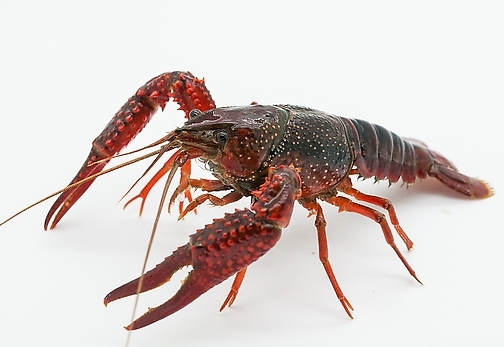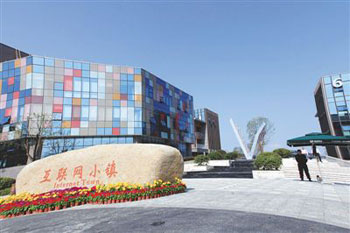Why is Hubei crayfish so popular? Production growth can't keep up with consumption frenzy.
Since last year, the prices of agricultural commodities have fallen a lot, and even if there has been a recent rise in pig prices, it is also an oversold rebound in the pig cycle. However, Hubei crayfish is wonderful, the output has been increasing year after year, and the price has been rising all the way. In the last five years, the wholesale price of crayfish has increased by more than 10% a year.
A hard to find, consumer fever detonates the battle for supply.
"go and suck the shrimp!"
Wait in a long line, pick a number, put on gloves, peel shrimp and eat shrimp. In early summer, in the streets and alleys of Wuhan, Qianjiang, Jingzhou and other places, a huge team of shrimp eaters has become a unique scenery.

At 06:00 on the evening of the 18th, at a well-known shrimp shop in Hankou, Mr. Liu from Wuchang was sitting at the door with his family waiting for the number to be called. An hour later, Mr. Liu and his family finally sat down at the table.
In recent years, crayfish have been on the market earlier and earlier. The person in charge of "Han Shrimp" in Wuchang told reporters that this year, shrimp went on the market in March, a month earlier than last year.
The reporter visited Wuhan, Qianjiang and other places to learn that general business shrimp restaurants sell about 2000 jin of shrimp a day, while well-known shrimp restaurants sell tens of thousands of jin of shrimp a day.
According to incomplete statistics, in 2015, there were more than 15000 restaurants operating crayfish in the province, with an annual consumption of 247000 tons of crayfish and an annual turnover of 33.26 billion yuan.
The foodie Initiative has led to a rapid rise in crayfish prices. According to a survey conducted by the Provincial Fisheries Bureau, the comprehensive average price of crayfish in the wholesale market in 2015 was 45.86 yuan / kg, an increase of more than 10 percent for five consecutive years, while a plate of Braised Prawns in Wuhan restaurants rose from less than 50 yuan in 2010 to 158 yuan now.
Crayfish with more than 45 grams are sold only in first-tier cities such as Beijing and Shanghai, and one sells for 28 yuan.
Food and beverage heat is transmitted to the fields, and the dispute over the supply of crayfish continues.
Four or five o'clock every morning is the busiest time in Zhangjiayao Village, Houhu Management District of Qianjiang City. Shrimp farmers, shrimp sellers, such as Zhi's vehicles, the lively scene lasted until 06:00 before gradually calming down.
Qianjiang City's largest crayfish wholesale market in Jiyukou Town, Jiangsu, Zhejiang and other foreign traffickers have been squatting here for a long time. Chen Baolin, who has been a shrimp dealer for more than a decade, says that supplies are in short supply year after year, especially this year. From April to August every year, he collects 20,000 to 40,000 kilograms of shrimp a day.
Data show that Hubei produced 433000 tons of crayfish in 2015, 60% of which went to markets outside the province.
The competition is becoming more and more fierce, and local processing enterprises often fall into the dilemma of "not having enough to eat". Although leading enterprises such as Lake, Huashan and Dehuo have their own bases, they still need to collect shrimp from the market.
Lake Group is the backbone export enterprise of Qianjiang City, with an annual processing of 200000 tons of crayfish. Lake has a crayfish breeding base of 100000 mu, which is still far from enough to meet the production. The company will purchase lobster all over Hunan, Henan, Sichuan and other provinces.
There is an imbalance between supply and demand, and production growth cannot catch up with consumption frenzy.
The shortage of goods and hot consumption have promoted crayfish farming. Jianli, Tongshan, Shayang and other places have long sensed the market and developed the crayfish industry one after another.
Jianli is a well-known rice county in the country, and it is also the largest county in crayfish production. The rice-shrimp co-cultivation technology has long been mature, and there are 1 million mu of rice fields suitable for shrimp farming in this county. Specializing in doing "rice article" Fuwa Group transferred 30,000 mu of land, cross-border to do "shrimp article".
Tongshan County is a key poverty-stricken county in our province. Last year, the county identified the development of rice fields and shrimp culture as an important means for farmers to get rid of poverty. The county government gives shrimp farmers a subsidy of 100 yuan per mu; for farmers, according to the quota of 1000 yuan per mu, county agricultural bank, agricultural commercial bank, postal savings bank implement "shrimp agricultural loan" discount loan.
According to the data of the Provincial Fisheries Bureau, in 2015, the total area of all kinds of surface cultured crayfish in the province exceeded 4 million mu, an increase of 920000 mu over 2010; there were 14 counties (cities and districts) with an area of more than 100000 mu; and there were nearly 100000 crayfish farmers in the province. among them, there are nearly 5000 large crayfish farmers with more than 100 mu. A group of farmers became rich by raising shrimp. Five years ago, 26-year-old Jiang Xiaowei contracted 88 mu of rice fields to raise shrimp in the Houhu management area of Qianjiang City. after several years of accumulation, Jiang Xiaowei bought a commercial house and a car in the city of Qianjiang, and easily joined the ranks of millionaires.
The area and output increase year after year, but why does the crayfish market shout "thirst" year after year, and the price rises again and again?
Wang Liang, director of the Industry Department of the Provincial Fisheries Bureau, analyzed that although production has reached a new level every year, consumption has increased exponentially, and this imbalance between production and consumption has led to crayfish in short supply and prices rising year after year.
In the past, only people in Hubei, Jiangsu, Zhejiang and other places preferred to eat crayfish, but now there is a trend of eating shrimp in many cities across the country. Tao Zhonghu, chief engineer of Qianjiang Municipal Fisheries Bureau, told reporters that from January to May this year, he had received more than 100 batches of teams from Guangdong, Guangxi, Jiangxi, Hunan and other places to study crayfish culture. there are even inspection teams from * and Northeast China.
The craze for eating shrimp has swept the country, and the "Braised Prawns" eating method created by the people of Qianjiang plays an important role. A variety of cooking techniques have conquered the tastes of the north and the south. It is understood that in the past, the way to eat crayfish is very single, mainly traditional fried shrimp balls and oil prawns. In recent years, with the development of crayfish industry, restaurants have created dozens of flavors such as steamed shrimp, minced garlic shrimp, stewed shrimp, fennel shrimp, pickled pepper shrimp, sweet and sour shrimp and so on, thus attracting more and more consumers. "Internet + Restaurant" has further expanded the consumer market. Qianjiang China Shrimp Valley Network is a professional website providing services for "foodie", "online platform ordering, offline market distribution", products including fresh shrimp, seedling shrimp, cooked shrimp, processed shrimp and so on. General Manager Tian Zhongling told reporters that since its launch at the end of February this year, the transaction volume has reached more than 100 million yuan.
Hubei crayfish occupies a place in the international market. In 2015, crayfish exports in our province earned 171 million US dollars, accounting for 65% of the country's total crayfish exports, ranking first in the country for nine consecutive years. In European and American markets, 2 out of every 3 crayfish come from Hubei.
The huge domestic and international market demand has doubled the value of this alien creature, which was once regarded as a "pest".
Take advantage of the situation and let shrimp prices return to popularization as soon as possible
Crayfish outshine others, and Li Shengqiang, director of the Provincial Fisheries Bureau, is delighted and worried: "Crayfish is originally a mass consumer product, and it is reasonable to return to the public price." Now a few hundred yuan a plate of shrimp has become a luxury, scaring off ordinary consumers, which is not conducive to the long-term development of the industry. "
According to expert estimates, the total demand for crayfish in China is about 1.92 million tons, including 1.4 million tons of fresh and live crayfish and 520000 tons of raw materials for processed shrimp. The demand gap of crayfish in the international market is as high as 300000 tons.
Related
- A course of planting techniques and methods on how to grow carrots
- How to plant the latest tulips?
- Is it better to pick tea in the morning or in the afternoon? When is the best time for tea to be picked? what is the third or fifth tea?
- Launch Yuanxiao Happy combination Haocha + Tea Yuan healthy Taste
- Penghu Tourism "Fireworks 20 Parade with You"
- 2022 West Lake Happiness holds "Digital Revitalization Voucher" and draws iphone13 and laptop.
- Banqiao Fuzhou social houses are designed to change start-up combined with police elimination to create a safe and livable environment
- The convenient measure of "mechanical weeding" in Xinbei has been abused and the Agriculture Bureau has imposed heavy penalties on the illegal land consolidation.
- Changgeng University Joins Hands with Four Memory Factories to Rescue Memory Talent Shortage
- The list of Taiwan's top 100 MVP managers is listed by the Director-General of the Farmers' Association of Sanxia District.



